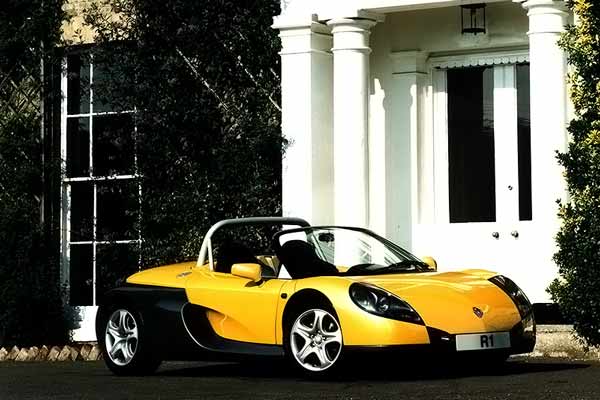
Back in the mid-nineties Renault launched something completely different, the brave but whacky, Renault Sport Spider
The nineties was a decade when Renault were on something of a roll. On the racetrack their engines powered 5 Formula 1 World Champion winners and 2 British Touring Car championships. On the road, hot hatchbacks like the Clio Williams mixed it with sales successes like the Megane Scenic. Renault had the confidence to go ahead and be a little different. Enter the Renault Sport Spider.
Renault Sport Spider – origins
First unveiled at the 1995 Geneva Motor Show and built at the Alpine factory in Dieppe after production of the Alpine GTA ended. The Renault Sport Spider’s aim was to launch Renault’s (then) new sporting brand, Renault Sport.
The car would form the basis of a single-car racing series, with a less powerful version sold as a racing car for the road.
Technology and performance
Like it’s great nineties rival, the Lotus Elise, the Renault Sport Spider was built around an Aluminium chassis. The bodywork was made from plastic composite body panels. Rose-jointed suspension, just like a racing car, endowed the Sport Spider with prodigious level of grip.
Stopping was taken care of by ventilated discs with ABS. In keeping with the racing car for the road focus, the brake servo was removed.
Mounted in the middle of the car is the same 2.0 litre, twin cam, 4-cylinder, 16v engine fitted to Renault’s Williams Clio. Producing 148bhp and driven through a 5-speed manual gearbox, the 930kg Sport Spider covered the 0-60mph dash in 6.5 seconds. Going on to a top speed of 131mph.
Renault Sport Spider – technical specifications
| 0-60mph | 6.5 secs | Engine Capacity | 1998cc |
| Max Speed | 131 mph | Cylinders/C | 4- cylinders, Straight |
| Power | 148 bhp | Layout | Mid-RWD |
| Torque | 129 lbft | Transmission | 5-speed Manual |
| Weight | 930kg |
Design and comfort
The Renault Sport Spider design was not one to forget in a hurry. The 1995 Geneva show concept car had butterfly doors and no windscreen. Renault at it’s brave, and slightly-whacky, best.
While the butterfly doors had disappeared for the production car and most were fitted with a windscreen (all 93 UK right hand drive cars had a full windscreen), the Sport Spider was still a car that asked driver and passenger to prioritise enjoyment over comfort.
In the interests of saving weight, there was no power-steering, no heater and no external door handles. The dashboard consisted of just a few dials and a digital speedo. The hood offered minimal protection against the weather and was rated to just 55mph. European Sport Spider drivers had it tougher still, 400 left hand drive cars were fitted with a wind deflector and no windscreen, making a helmet compulsory.
Motorsport
As previously mentioned, the Renault Sport Spider was designed not only as a road car but also as the basis of a one-make racing series.
The Spider cup championships ran from 1995 to 1999 and launched the careers of Jason Plato (who won 11 out of 14 races in 1995) and Andy Priaulx (winning all 13 races in 1999).
Renault Sport Spider production ends
Production of the Renault Sport Spider ended after only a year and a half and only 1685 cars sold worldwide.
Sales undoubtedly suffered as a result of being launched in the same year as the Lotus Elise. Compared with the Lotus, the Spider was slower, more expensive, heavier and (arguably) not as practical. Which is a shame as the Sport Spider stands out as a brave piece of minimal sports car design. One of the nineties truly courageous designs.
Limited numbers mean the Renault Sport Spider has always been a rare sight in the UK. Rarity mixed with those dramatic looks has always kept values strong.
Where the car did succeed was in launching the Renault Sport brand, which has created some of the most memorable hot hatchbacks of the last 20 years.


